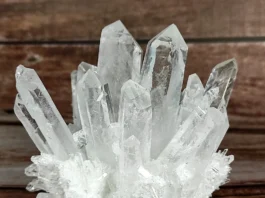Avalanches are natural disasters that occur when a mass of snow, ice, and rock slides down a slope. They can be triggered by a variety of factors, including the weight of the snow, the steepness of the slope, and the presence of cracks or other weaknesses in the snowpack. Avalanches can be extremely dangerous, and have been responsible for many fatalities throughout history.
Some of the deadliest avalanches in history include:
Contents
The 2010 Northern Pakistan avalanche

The 2010 Northern Pakistan avalanche was a series of avalanches that occurred in the northern region of Pakistan in January 2010. The avalanches were triggered by heavy snowfall and were among the worst in the country’s history.
The avalanches struck several villages in the region, burying homes and blocking roads. Over 140 people were killed and hundreds more were stranded in the region. The avalanches also caused significant damage to infrastructure, including roads, bridges, and power lines.
The Pakistani military and local rescue workers worked to evacuate stranded villagers and deliver aid to the affected areas. International aid organizations also provided assistance to the region.
The 2010 Northern Pakistan avalanche was one of the deadliest avalanches in history and had a significant impact on the region. It highlighted the need for better preparedness and response efforts in the event of natural disasters in the region.
The 1916 Dolomites avalanche

The 1916 Dolomites avalanche was an avalanche that occurred in the Dolomites region of Italy in January 1916 during World War I. The avalanche struck an Austrian military camp, burying a number of soldiers and resulting in the deaths of over 2,000 people.
The avalanche was triggered by a combination of heavy snowfall and the weight of the soldiers and equipment in the camp. It struck the camp in the early morning, burying soldiers in their tents and causing widespread destruction.
The avalanche had a significant impact on the course of the war, as it effectively wiped out an entire brigade of Austrian soldiers. It was also one of the deadliest avalanches in history, and highlighted the dangers of building military camps in areas prone to avalanches.
The 1899 Gudbrandsdalen avalanche
The 1899 Gudbrandsdalen avalanche was an avalanche that occurred in the Gudbrandsdalen valley in Norway in December 1899. The avalanche struck several villages in the region, burying homes and killing 43 people.
The avalanche was triggered by heavy snowfall and the steepness of the slopes in the region. It struck the villages of Gåsbu and Finse, destroying several homes and causing widespread damage.
The 1899 Gudbrandsdalen avalanche was one of the deadliest avalanches in Norwegian history, and had a significant impact on the region. It highlighted the need for better preparedness and response efforts in the event of natural disasters in the region.
The 2010 Mount Meager avalanche
The 2010 Mount Meager avalanche was an avalanche that occurred in British Columbia, Canada in June 2010. The avalanche was triggered by an earthquake that struck the region, causing a large chunk of rock and ice to break off from a mountain and slide down the slope.
The avalanche struck a number of homes in the region, destroying several buildings and causing significant damage. Six people were killed and several others were injured in the avalanche.
The 2010 Mount Meager avalanche was one of the deadliest avalanches in Canadian history and had a significant impact on the region. It highlighted the need for better preparedness and response efforts in the event of natural disasters in the region.
The 2010 Mount Everest avalanche

The 2010 Mount Everest avalanche was an avalanche that occurred on Mount Everest in April 2010. The avalanche was triggered by an earthquake that struck the region, causing a large chunk of ice and snow to break off from the mountain and slide down the slope.
The avalanche struck a group of Sherpa guides who were preparing the route for climbers on the mountain. Sixteen Sherpa guides were killed and several others were injured in the avalanche. It was one of the deadliest avalanches ever recorded on Mount Everest.
The 2010 Mount Everest avalanche had a significant impact on the climbing community and highlighted the dangers of climbing on the mountain. It also sparked discussions about the risks faced by Sherpa guides and the need for better safety measures on the mountain.






